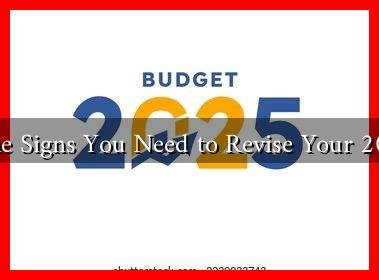-
Table of Contents
What Metrics Should You Use to Measure Budget Success in 2025?
As we move into 2025, organizations are increasingly recognizing the importance of effective budget management. The ability to measure budget success is crucial for ensuring financial health and achieving strategic goals. In this article, we will explore the key metrics that can help organizations assess their budget performance, providing insights and examples to guide your financial planning.
Understanding Budget Success
Before diving into specific metrics, it’s essential to define what budget success means. Budget success is not merely about adhering to a predetermined financial plan; it encompasses achieving strategic objectives, optimizing resource allocation, and ensuring financial sustainability. In 2025, organizations must adopt a holistic approach to budget measurement that includes both quantitative and qualitative metrics.
Key Metrics for Measuring Budget Success
Here are some of the most effective metrics to consider when evaluating budget success in 2025:
- Variance Analysis
- Return on Investment (ROI)
- Cost per Acquisition (CPA)
- Cash Flow Management
- Employee Productivity
Variance analysis involves comparing actual financial performance against the budgeted figures. This metric helps organizations identify discrepancies and understand the reasons behind them. For instance, if a company budgeted $100,000 for marketing but spent $120,000, analyzing the variance can reveal whether the overspend was due to unexpected opportunities or poor planning.
ROI measures the profitability of investments made within the budget. It is calculated by dividing the net profit from an investment by the cost of the investment. For example, if a company invests $50,000 in a new software system and generates an additional $150,000 in revenue, the ROI would be 200%. This metric is crucial for assessing the effectiveness of budget allocations.
For organizations focused on growth, understanding the cost of acquiring new customers is vital. CPA is calculated by dividing total marketing expenses by the number of new customers acquired. A decreasing CPA over time indicates improved efficiency in marketing spend, which is a positive sign of budget success.
Monitoring cash flow is essential for ensuring that an organization can meet its obligations. Positive cash flow indicates that the organization is generating more cash than it is spending, which is a key indicator of financial health. Tools like cash flow forecasts can help organizations anticipate future cash needs and adjust their budgets accordingly.
Measuring employee productivity can provide insights into how effectively resources are being utilized. Metrics such as revenue per employee or output per hour worked can help organizations assess whether their budget allocations are leading to optimal performance. For example, a company that sees an increase in revenue per employee after investing in training programs may consider that a successful budget outcome.
Case Studies and Real-World Examples
To illustrate the importance of these metrics, consider the case of Company X, a mid-sized tech firm that implemented a new budgeting strategy in 2024. By focusing on variance analysis and ROI, they identified that their marketing budget was not yielding the expected results. After reallocating funds to more effective channels, they saw a 30% increase in customer acquisition and a significant drop in CPA.
Another example is Company Y, a retail chain that prioritized cash flow management. By implementing a robust cash flow forecasting system, they were able to anticipate seasonal fluctuations and adjust their inventory budgets accordingly. This proactive approach led to a 15% increase in cash reserves, allowing them to invest in new store openings.
Conclusion
Measuring budget success in 2025 requires a multifaceted approach that goes beyond simple adherence to financial plans. By utilizing metrics such as variance analysis, ROI, CPA, cash flow management, and employee productivity, organizations can gain valuable insights into their financial health and strategic effectiveness. As demonstrated by real-world examples, these metrics not only help in assessing past performance but also guide future budgeting decisions. Embracing these metrics will empower organizations to navigate the complexities of financial management and achieve sustainable growth.
For further reading on effective budgeting strategies, consider exploring resources from the Forbes Finance Council.




